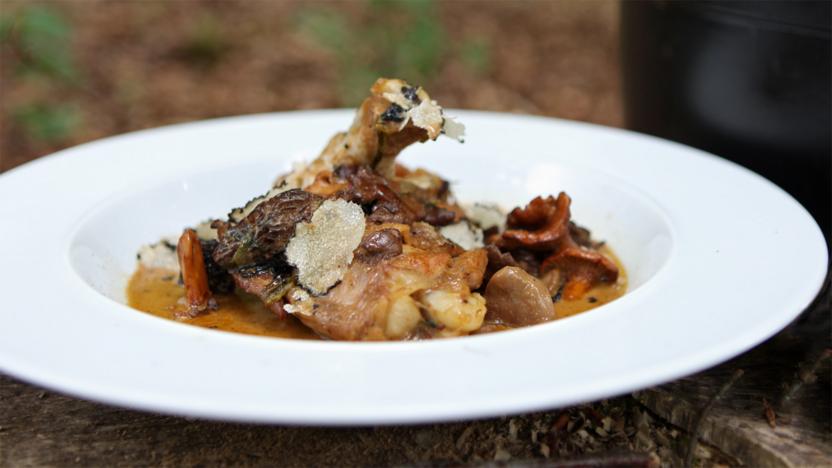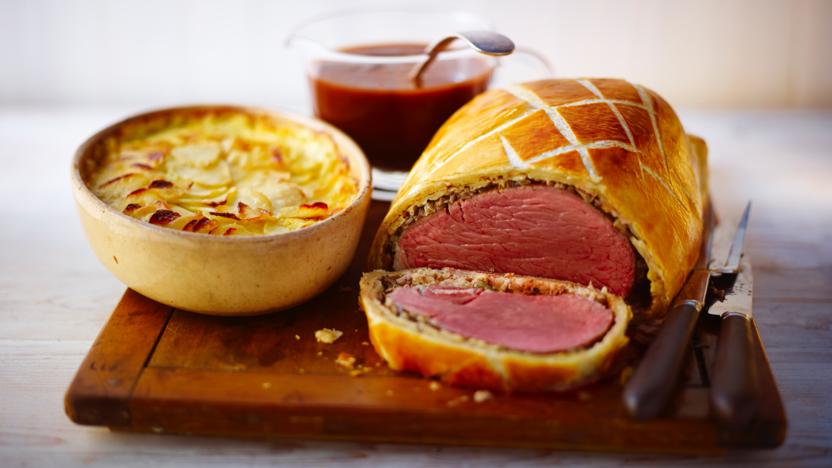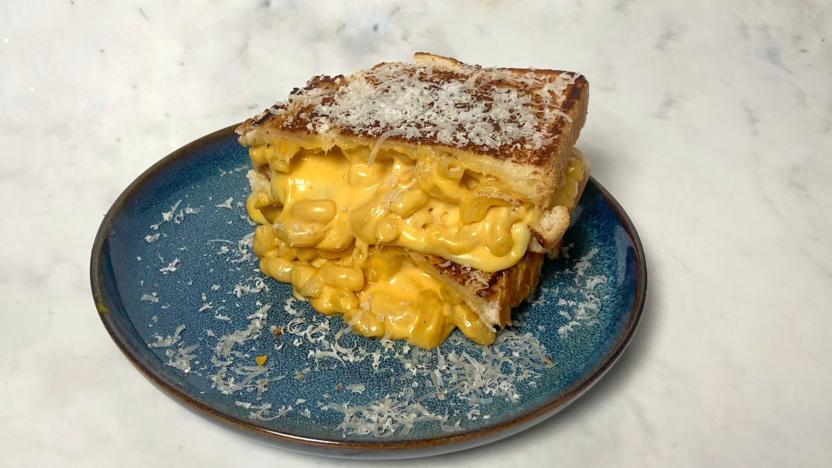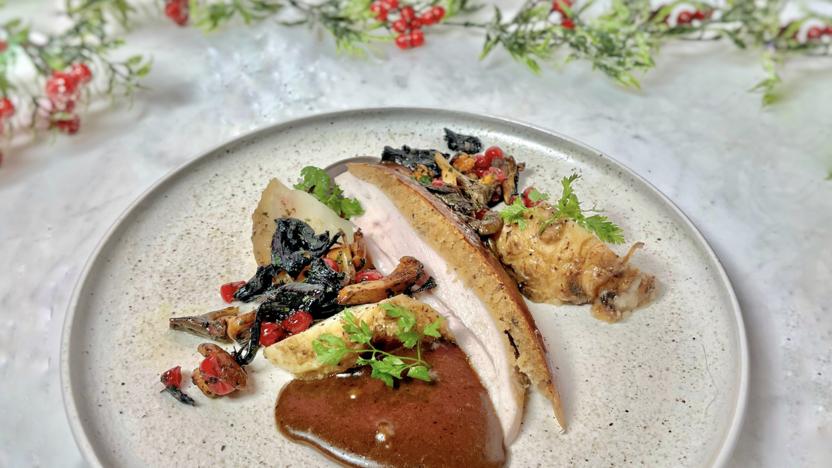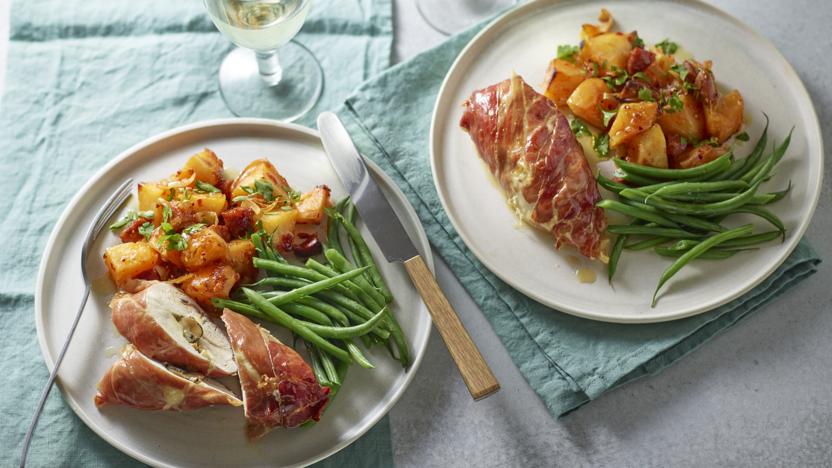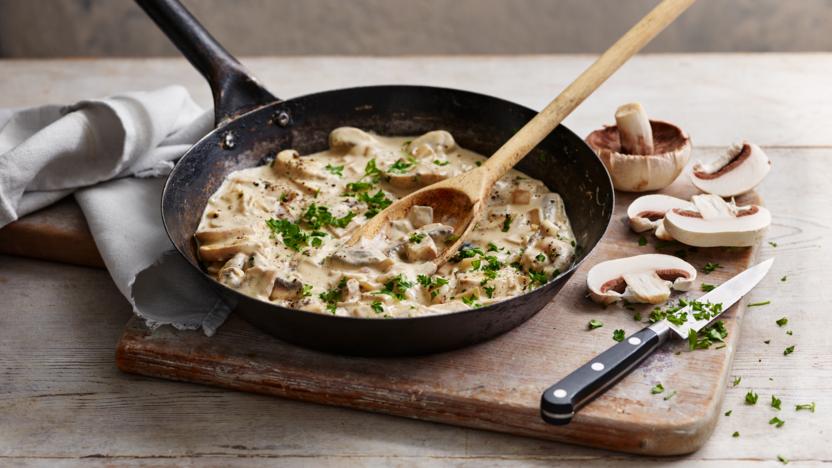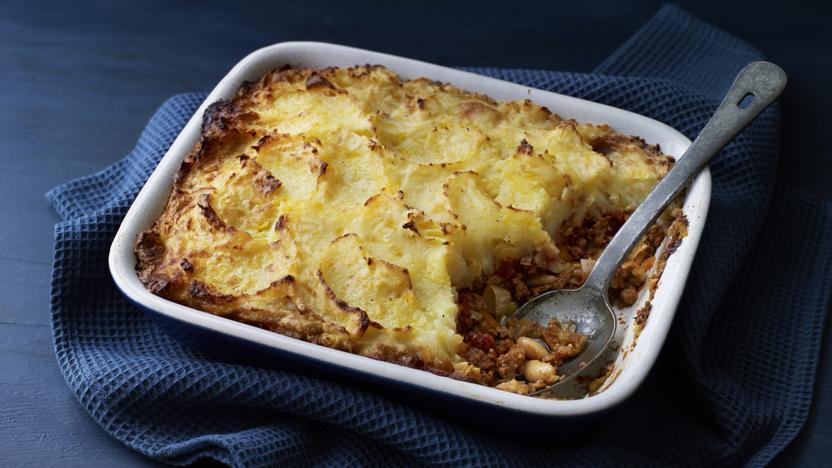Truffle recipes
By weight, this knobbly fungus is one of the most expensive foods in the world. So only use it with the best truffle recipes. If you're unsure how to cook truffles, take a steer from Michel Roux and add a little into your beef Wellington, or follow James Martin's advice and combine with chicken and wild mushrooms.
A luxurious dish of chicken in a creamy mushroom sauce topped with truffle shavings.
More truffle recipes
Buyer's guide
There are two main types: black and white. The finest black truffles are found in the Périgord region of France; the best white truffles (in fact they’re more beige) in the Piedmont region of Italy. You can find them from November to February, though it may be as late as March in the Périgord. Although attempts have been made to cultivate truffles, the majority are still found wild, growing around the roots of oak, hazel and lime (linden) trees. Truffles are sniffed out by pigs or dogs trained to recognise the smell.
Storage
Truffles should be eaten at the peak of ripeness (unripe truffles are not so flavourful) and can be kept in a sealed container in the fridge in an absorbent medium, such as rice or kitchen towel, to ensure that they do not rot from moisture on the surface.
Truffles can also be kept in a sealed jar with a few eggs which will absorb the truffley aroma through their porous shells.
Preparation
Black truffles are peeled and can be used raw or lightly cooked, while white truffles are just carefully wiped clean and should never be cooked. They have a distinct peppery taste and are usually sliced raw directly onto the dish. You can buy a special slicer that cuts razor thin slices, or use a mandolin. The truffle’s unique aroma and taste does something magical to foods – shaved over pasta, added to scrambled eggs, omelette or risotto. Truffle oil is the next best thing – a combination of olive oil and truffle extract which can be drizzled over pasta, risotto and salads or used in salad dressings and sauces. There’s no substitute for the unique taste of a fresh truffle though.
